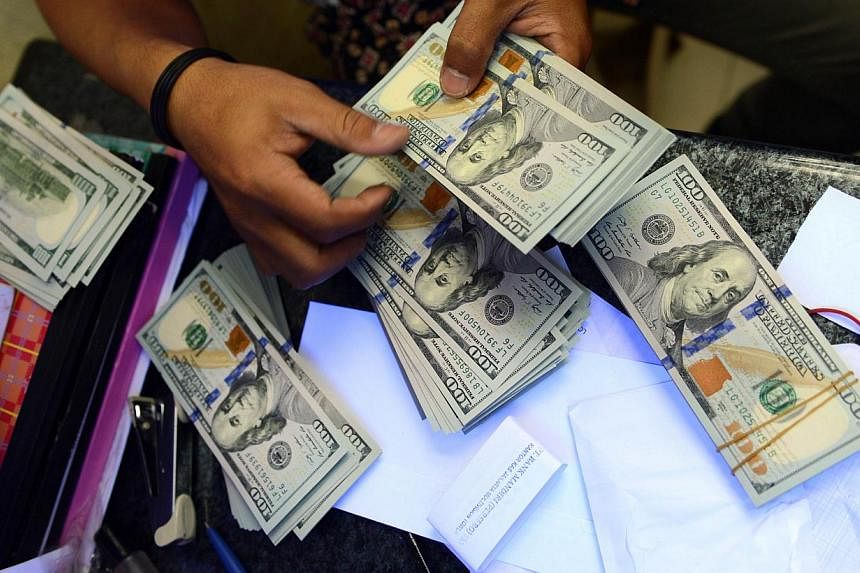TOKYO (Reuters) - The US dollar edged lower in early Asian trade on Friday but remained well above this week's lows plumbed after the Federal Reserve's dovish stance on interest rates sent the greenback tumbling.
The dollar's plunge on Wednesday after the Fed cut its inflation outlook and its growth forecast did not alter the long-term view that divergent monetary policy expectations will bolster the U.S. currency in the months ahead.
While market players' consensus expectation for the U.S. central bank's interest rate hike have shifted, the overall trend has not. A majority of Wall Street's top banks now see the Fed holding off until at least September before raising rates, with odds fading for a June hike, a Reuters poll showed.
"Our core views have not changed across commodity and FX markets: we remain bearish on commodities and bullish on the USD in the G10 and EM areas," strategists at RBC Capital Markets said in a note to clients. "In fixed income, we have shifted from bearish to a neutral stance for U.S. 10-year yields, preferring to step aside for better perspective after multiple whipsaws have chopped us up over the last three weeks," they added.
Undermining the greenback, U.S. Treasury yields wallowed not far from multi-week lows struck after the Fed meeting. The yield on benchmark 10-year notes slipped to 1.963 per cent in Asian trading from its U.S. close of 1.976 per cent on Thursday.
The euro inched up about 0.1 per cent on the day to US$1.06725 , but remained far from its high of US$1.1062 hit on Wednesday after the Fed's announcement when it marked its biggest one-day rise against the dollar in six years. This week's volatile swings saw the common currency plunged to a 12-year low of US$1.0457 on Monday.
Against the yen, the dollar edged down about 0.1 per cent to 120.71, well above its Wednesday post-Fed low of 119.29 yen.
On the U.S. data front, the number of Americans filing new claims for unemployment benefits rose only marginally last week, indicating the labour market remained on solid footing.
That suggests the Fed bank might position itself for a rate hike later this year. By contrast, the European Central Bank launched a quantitative easing programme this month that sent several key European yields to record lows and some into negative territory.
The Bank of Japan stood pat on policy earlier this week, as it has every month since expanding its massive stimulus programme in October last year.

